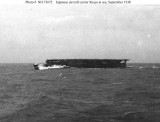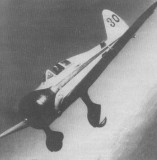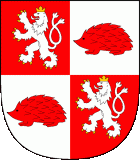List of author's articles
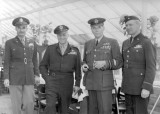
Hugh Montague Boom Trenchard
Father of the Royal Air Force, the first independent air force in history.

1939 Nomonchan - Zhukov's crushing of the 6th Army of the Japanese Empire I.
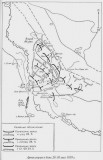
1939 Nomonchan - Zhukov's crushing of the 6th Army of the Japanese Empire I.

1939 Nomonchan - Zhukov's crushing of the 6th Army of the Japanese Empire II.
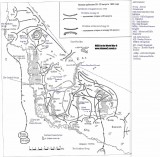
1939 Nomonchan - Zhukov's crushing of the 6th Army of the Japanese Empire II.

1939 Nomonchan - Zhukov's crushing of the 6th Army of the Japanese Empire III.
Part III. deals with the aviation side of the whole encounter.

343rd Kokutai elite unit of the Japanese naval air force
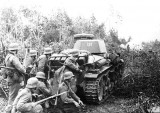
6. Panzer Division
The 6th Panzer Division gained one of the best combat records on the battlefields of World War II among all the divisions that fought in it. Its operation begins with the invasion of Poland in 1939 and ends with the defense of Vienna in 1945.

Air aces of the First World War - A. A. Kazakov
Russian ace with 20 victories

Air aces of the First World War - Edward Corringham "Mick" Mannock

Air aces of the First World War - Edward Rickenbacker

Air aces of the First World War - Francesco Baracca

Air aces of the First World War - Frank Linke-Crawford

Air aces of the First World War - Franz Gräser

Air aces of the First World War - Friedrich Navratil

Air aces of the First World War - Godwin Brumowski
The most successful pilot of the Austro-Hungarian Air Force with 35 victories.

Air aces of the First World War - Julius Arigi

Air aces of the First World War - Oswald Boelcke

Air aces of the First World War - René P. Fonck

Air aces of the First World War - Willy Coppens
Belgian ace with 37 victories, the most successful balloon destroyer

Air battles over the Gulf of Germany
The first victory in Germany's air defense took place the second day after the entry of the United Kingdom into the ongoing war between Germany and Poland. The British goal was to eliminate the threat from the Kriegsmarine. While British ships chased German corsairs across the oceans, the RAF sought to contribute to the war effort by attacks on warships off the German coast and in ports. How the RAF was doing its efforts in 1939 is trying to describe this article ...

Anglo-Boer War
English liquidation of Boer independence in South Africa. Concentration camps for Boer civilians and the Boer guerrilla war.
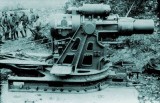
Asiago 1916
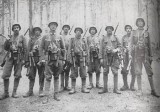
Austro-Hungarian Stosstruppen during WWI
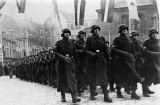
Baltic fighters in German service

Battle of Bzura
The Battle of Bzura, also called the Battle of Kutna, was one of the toughest and bloodiest encounters in the 1939 Polish campaign.
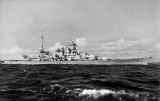
Battleship Scharnhorst (1936)
Scharnhorst was the first ship of the German navy to go well above the limits of the Treaty of Versailles from the beginning. Originally, the ship's displacement was supposed to be about 18,000 tons, but in response to the construction of the French Dunkirk-class battleships, construction was completed in July 1934 and resumed about a year later as another structure with an official tonnage of 26,000 tons. Scharnhorst's new design provided good armor protection and the high-pressure steam turbines gave it excellent speed.

Black Shirts - Camicie Nere, armed militia of fascist Italy
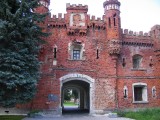
Brest-Litovsk 1941
In June 1941, the 4th Soviet Army was located in the area of Brest-Litovsk, which "conquered" the Brest-Litovsk fortress on the Poles in September 1939 and then held a legendary joint parade with Guderian's divisions. The following article discusses its fate at the beginning of the German invasion.

Capitano Mario Visintini
Italian fighter who became a legend in the backwater of Italian East Africa fighting against Allied superiority.

Captain Kenji Shimada

Carpathian Sic

Chasan 1938, Japanese-Soviet force testing

Chinese sky I

Chinese sky III

Chiune Sugihara

Clive Robertson Caldwell

Code letters - Jagdverbände der Luftwaffe

Code letters - Kampfverbände der Luftwaffe
From the spring of 1939 the new code letter system for Kampfverbänden was introduced. The combination of numbers and letters in front of the side cross indicated the appropriate unit to which a particular machine belonged.

Colonel Werner Mölders

Eduard Martinko
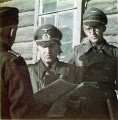
Erhard Raus
Correct assessment of the opponents... the courage to clear the field for a short time when you have only a small group in front of you, the energy put into sharp marches, the boldness in sudden attacks, the increased activity that great souls acquire in the moment of danger - these are the basis of such victories.

Fighter aces of Japan at Nomonchan 1939 with 20 or more kills

Fighter aces of Japan in the Chinese incident 1937 - 1941

Fighter aces of the USSR at Nomonchan 1939

Fighter Aces Spanish Civil War 1936-39 - Nationalists

Fighter Aces Spanish Civil War 1936-39 - Republicans
Fighter Aces Spanish Civil War 1936-39 - Republicans. Spaniards, French, USA, Yugoslavia, USSR

Fighter Aces Winter War 1939-40 - Finns

Fighter Aces Winter War 1939-40 - Soviets
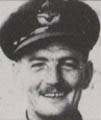
Frank Reginald „Chota“ Carey
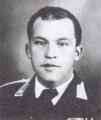
František Hanovec
One of the few successful Slovak pilots in the battles with Hungary in the spring of 1939, later a Slovak fighter ace. He was one of the most experienced Slovak fighters and went through all the conflicts of the independent Slovak Air Force.

Franz Hrdlicka
As a lieutenant he joined the 5th / JG 77 Herz As, the baptism of battle passed over the Balkans, followed by fighting with the British over Crete. In Russia, after the first few years, he achieved seven air victories, in 09.1941 awarded both degrees of the Iron Cross.

French Naval Rebellions (1919)

French Naval Rebellions (1919)

Generalleutnant Martin Harlinghausen
German military aviator and general. He specialized in naval operations and anti-ship combat. He is credited with destroying 22 ships during World War II.

German Revolution 1918-1920 I.

German Revolution 1918-1920 II.
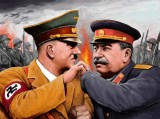
German-Soviet cooperation
Rappal Treaty between Germany and Soviet Russia signed on 16.4.1922, enabled both countries to emerge from international isolation and establish advantageous cooperation, especially economic, but also military. The secret part of the agreement dealt with cooperation between the general staffs of the German and Soviet armies. The most famous is the flight school in Lipetsk.
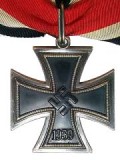
Holders of the Knight's Cross with the Golden Clasp for close combat

Hungarian-Slovak air battles in the spring of 1939
Hungary's border battles with Slovakia in the spring of 1939 also had an air dimension. An attempt to capture the course of air battles is the following article, which is followed by brief biographies of selected major actors.

Ilya Grigorievich Starinov

Iraq 1941 Battle of Habbanya Part I.

Italian Air Force in East Africa

Italian East Africa 1940-1941
Description of the fighting in the lesser-known battlefield of World War II.

Italian East Africa 1940-1941
Italian MAS boats and dwarf submarines in the Black Sea in 1942-1943
Combat deployment of the Italian navy in the Black Sea and Lake Ladoga in 1942-43.
Italian submarines and ships in the Far East 1940-45
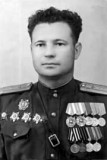
Ivan Yevgrafovich Fyodorov
Biography of a Soviet fighter and test pilot, a veteran of several conflicts from the Spanish Civil War to the fighting in Korea, in which the reported total number of victories in some sources reaches 135. The fact attempts to reveal this article.
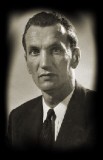
Jan Karski - a man who tried to stop the Holocaust

Japanese militarism in the first half of the 20th century
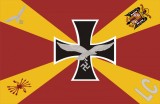
Legion Condor - a breakthrough to the Mediterranean
German volunteers on the side of General Franco's nationalists in the Spanish Civil War. Events of the Condor Legion fighting in the direction of the Mediterranean. The Battle of Teruel, the Battle of the River Ebro, the last months of the Civil War.

Legion Condor - Hard times
German volunteers on the side of General Franco's nationalists in the Spanish Civil War. Events before the founding of the Condor Legion and the first months of its existence until the spring of 1937.

Legion Condor - march north
German volunteers on the side of General Franco's nationalists in the Spanish Civil War. Events to fight the Legion of Condor on the Northern Front, including the bombing of Guernica.
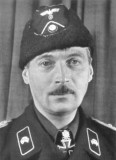
Lieutenant General Hyazinth Count Strachwitz von Grossgauch-Gamnitz

Lieutenant Masatoshi Masuzawa

Lieutenant Shogo Saito

Little War - March 1939 in Eastern Slovakia

Luftflotten der Luftwaffe

Luftwaffe fellow fighters - aircraft marking
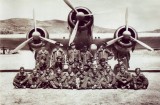
Maggiore Carlo Emanuele Buscaglia
Maggiore Carlo Emanuele Buscaglia, pilot of the Regia Aeronautica, was one of the most famous aviators of World War II and was awarded the Gold Medal for military bravery. He specialized in torpedo bomber attacks and managed to sink, according to official Regia Aeronautica records, more than 100,000 tons of enemy shipping tonnage.

major Džozo Iwahaši

major Helmut Wick
Helmut Paul Emil Wick was a German flying ace of World War II. He was a wing commander in the Luftwaffe of Nazi Germany, and the fourth recipient of the Knight's Cross of the Iron Cross with Oak Leaves, the nation's highest military decoration at the time.

major Iwori Sakai

Naval operations under the intervention of the Allies in the Russian Civil War

Neutral sky of Switzerland during World War II

Obersturmbannführer Leon Degrelle

Operation NiWi
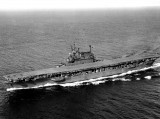
Operational history of the aircraft carrier USS Enterprise (CV-6)
The story of America's most decorated aircraft carrier serving throughout World War II.

Organization of the Air Force of the Empire of Japan

Origin and first deployment of SS units
The formation of Waffen-SS units and their first fighting until June 1941

Personal guard of the Grand Duchy of Hesse
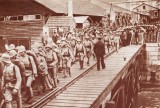
Portugal on the fronts of First World War
Portugal's war contribution to the victory of the Entente in World War I was redeemed by about 12,000 lost soldiers on European and colonial fronts and at sea. Civilian casualties climbed to 220,000, of which 82,000 per famine due to the collapse of supplies and 138,000 from the "Spanish flu". The following article deals with the main events on the ground battlefields.

R-U Infanterieregiment Nr. 8

R-U Infanterieregiment Nr. 81

Regia Aeronautica in North Africa
The Air Force of the Kingdom of Italy on the battlefield of North Africa during World War II
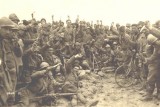
Reparti d´assalto - Italian assault forces during WWI
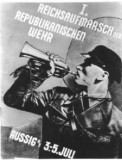
Republikanische Wehr
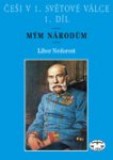
Review: Czechs in World War I Part 1

Review: Czechs in World War I Part 2 and 3

REVIEWS: Radan Lášek - SOS Destination Unit
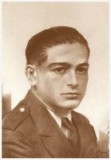
Rodolphe De Hemricourt De Grunne
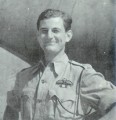
Ronald Cuthbert Hay
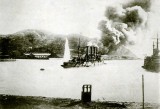
Russo-Japanese War 1904-05 Part 2
Seeing Russia as a rival, Japan offered to recognize Russian dominance in Manchuria in exchange for recognition of the Korean Empire as being within the Japanese sphere of influence. Russia refused and demanded the establishment of a neutral buffer zone between Russia and Japan in Korea, north of the 39th parallel. The Imperial Japanese Government perceived this as obstructing their plans for expansion into mainland Asia and chose to go to war. After negotiations broke down in 1904, the Imperial Japanese Navy opened hostilities in a surprise attack on the Russian Eastern Fleet at Port Arthur on 9 February 1904. The Russian Empire responded by declaring war on Japan.

Russo-Japanese War 1904-05 Part 3
Although Russia suffered a number of defeats, Emperor Nicholas II remained convinced that Russia could still win if it fought on; he chose to remain engaged in the war and await the outcomes of key naval battles. As hope of victory dissipated, he continued the war to preserve the dignity of Russia by averting a "humiliating peace". Russia ignored Japan's willingness early on to agree to an armistice and rejected the idea of bringing the dispute to the Permanent Court of Arbitration at the Hague.

Russo-Japanese War 1904-05 Part 4
The complete victory of the Japanese military surprised international observers and transformed the balance of power in both East Asia and Europe, resulting in Japan's emergence as a great power and a decline in the Russian Empire's prestige and influence in Europe. Russia's incurrence of substantial casualties and losses for a cause that resulted in humiliating defeat contributed to a growing domestic unrest which culminated in the 1905 Russian Revolution, and severely damaged the prestige of the Russian autocracy.
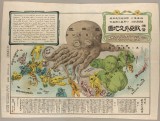
Russo-Japanese War 1904-05 Volume 1.
In the late nineteenth century, a fever broke out among the great powers over the colonial division of the rest of the world. Japan naturally succumbed to this pressure and, like Tsarist Russia, sought to usurp Korea and Manchuria and its share of the division of China. Japan was already dreaming of seizing Sakhalin and the Far East.
Russia sought a warm-water port on the Pacific Ocean both for its navy and for maritime trade. Vladivostok remained ice-free and operational only during the summer; Port Arthur, a naval base in Liaodong Province leased to Russia by the Qing dynasty of China from 1897, was operational year round.

Sergeant Bundji Yoshiyama

Sergeant Hiromichi Shinohara
A brief biography of the Japanese Army Air Force's most successful fighter ace. His score of 58 aerial victories was achieved in the Nomonchan conflict.

Sergeant Hisae Akiyama

Shōichi Sugita
He became one of the leaders of the 204th Kokutai es during the Solomon Islands campaign and one of the top five scoring pilots in the Japanese navy.
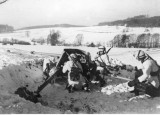
Slavic volunteers in German service during WWII
Belarusians, Ukrainians, Cossacks and Russians fighting in German armed forces against Soviet Russia. Brief outline of numbers and major events.
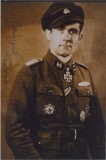
SS-Unterstrumführer Hermann Maringgele

Stalin's Grand Plan

Stepan Andrijovic Bandera
A controversial figure in Ukrainian history. Seven times sentenced to life imprisonment for assassinations in Poland during the 1930s. After the defeat of Poland, briefly at large, then imprisoned in Sachsenhausen concentration camp until autumn 1944, post-war OUN leader, killed by the KGB in Munich.
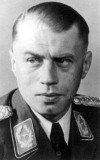
Suicide attacks by the Luftwaffe?

Százados Aladár Ali (Negró) Szobránczy
Hungarian fighter pilot who achieved two air victories over Slovak aircraft during the fighting in the spring of 1939
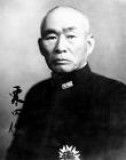
Takeo Kurita
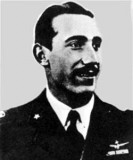
Teresio Vittorio Martinoli

The American-Spanish War of 1898
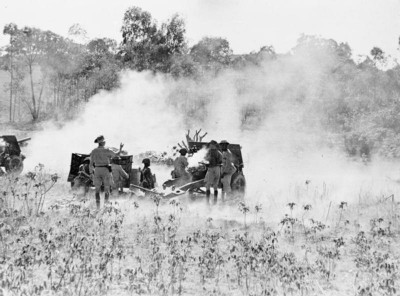
The Anglo-French struggle in the Second world war
Operation Catapult, air raids on Gibraltar, Operation Ironclad, fighting in the Levant ... The tragedy of the fighting between the two former allies ...

The battle of Lvov

The fight with wooden swords – missed opportunity for German submarines in the Norwegian campaign
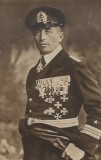
The last sailing corsair - Felix Graf von Luckner

Training of Soviet pilots for World War II
Did Stalin plan an aggressive war against Germany?
Did the mass training of Soviet pilots produce " slaves of heaven "?
U 53 - A stormy journey to America during World War II

U-boot Krieg

Uprising on the light cruiser Chongqing and the Civil War in China (1949)

War in Abyssinia 1935-1941
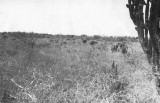
War of Gran Chaco (Bolivia - Paraguay 1928-1935)
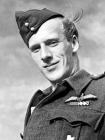
Wing Commander Adrian Warburton

Winter war – the Ambush of Finland by the Soviet union

Winter war – the Ambush of Finland by the Soviet Union

Winter war – the Ambush of Finland by the Soviet Union

WWI Fighter Aces - Balloon destroyers
the most demanding combat activity of the fighter air force of the First World War.

WWI Fighter Aces - Introduction

WWI Fighter Aces of Britain - Ireland

WWI Fighter Aces of Britain - Scotland
Join us
We believe that there are people with different interests and experiences who could contribute their knowledge and ideas. If you love military history and have experience in historical research, writing articles, editing text, moderating, creating images, graphics or videos, or simply have a desire to contribute to our unique system, you can join us and help us create content that will be interesting and beneficial to other readers.
Find out more
